An important aspect of studio photography is the artificial lighting that is used. The lighting used helps to present an emotional responses by the viewers of the audience, it also allows the focal point of the image much clearer. Another reason why artificial lighting is important is the fact it adds temperature to the photograph, the harsher the light the warmer the atmosphere of the image, making it seem more cheerful. In studio photography there are four different types of studio lighting:
- Flat Light – This is when the light source is facing directly at the subject of the image, meaning the subject is well lit, and all emphasis is on the whole subject. This light source creates a full shadow of the subject in the image.
- Split Light – A light source which is provided at the side of the subject, which makes half of the subject lit up and the rest fading into darkness, this is where the photographer can clearly show their main focal point
- Back Light – The light source is found at the back of the subject which helps to create a semi-silhouttes creating a contrast in like and dark in the frame of the image.
- Flash – Producing a flash of artificial light (typically 1/1000 to 1/200 of a second) at a color temperature of about 5500 K to help illuminate a scene.
- One Point Lighting – This is when the photographer will only use one light, which is considered to be the ‘key light’. This singular light is used to emphasis certain aspects of the subject. Usually this light is likely to be a soft box as it turns a powerful light source into a more diffused light.
- Two Point Lighting – This is also known as the cross lighting technique and is mainly used in interviews. The first light is used to show highlights and shadows. The secondary light is known as the fill-light which is used to eliminate the shadows and allow the whole subject to be lit up. This light source is found directly opposite the key light source.
- Three Point Lighting – This is the black light, which is placed behind the subject. Its purpose is to provide definition and subtle highlights around the subject’s outlines. This helps separate the subject from the background and provide a three-dimensional look.
- Chiaroscuro Tehnique – This technique is used to create contrast between the lighting on the subject. Normally, the light source is used to illuminate one side of the face leaving the other side in darkness. To create this affect the key light is place next to the subject, on the side and a black background is used.
John Rankin
Rankin is a British photographer who is well known for capturing images of celebrities in a studio. During his careers he and his friend created a magazine where they would be able to promote their photography. Not only has his work appeared in his own magazine but also in Vogue and GQ, making his images reach out towards the younger generation.
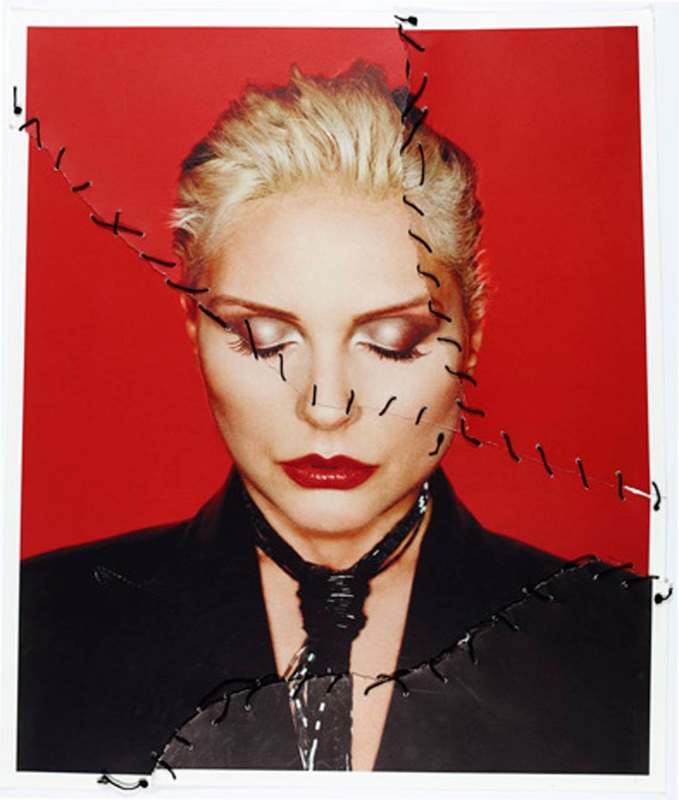
This photograph is apart of Rankin’s destroy series, where he would capture photographs of celebrities attempting to show their emotions and personality through costume, props and makeup. He would then print out the images and hand them to the celebrities to make it their own. It was then the celebrity job to destroy, colour stitch, do whatever they wanted to the image to express their personality. Conceptually, Rankin wanted to outline the importance that no one is perfect, even if we are famous we are not perfect, which outlines issues in todays society. When first viewing this photograph I am drawn to the fact that the model has her eyes closed and has her head facing downwards, which could present her emotional state at this time as negative. The use of the plain red background is also used to help support this idea. The necklace found around her neck could be considered as something trapping her, thus she attempts to try and take away her life. The lighting used to capture the photograph seems to be three point lighting as all of the model is well lit up, having no shadows or contrast in tones. I would consider texture and line to be the formal elements within the image, these can be found through the stitching of the image and through the different materials of clothing. The ISO in this image is likely to be low as there is no noise found within the image. Moreover, the image is not completely bright meaning the shutter speed is likely to be fast. Moreover, the whole frame of the image is in focus, suggesting that the aperture is likely to be high and informs us that the image has a large depth of field. In this example of Rankin’s work we can see the celebrity has ripped up the photograph and sown it back together using black thread, making this element clearly visible. This could show that at this time her life is being ripped apart but slowly and surely she is sowing it back together to gain a better life. This photograph is presented in colour which eliminates a high contrast in tonal regions, allowing the three point lighting to clearly be shown. The image is taken at a straight on angle with the subject located in the foreground of the image, making her the main focus point. I believe Rankin’s work clearly shows elements of studio photography but with his own twist, making his work successful. I enjoy looking at his destroy series as I found them visually stimulating and makes you grasp an understanding of what life is truly like for the celebrity.
Plan
I will be conducting this photoshoot inside of the schools photography studio. I will be using the white infinite wall and the black curtain as the backgrounds. The lights being used will mainly be a soft box and a normal harsh light. With regards to camera settings I will be having my ISO roughly around 400-800 and my shutter speed will be around 1/100. The white balance will be put onto tungsten and I will be using a manual focus. I will be looking at using the different techniques listed above to put the theory of studio photography into practice. Moreover, I will be keeping the editing simple I will be levelling the images and adjusting the curves to make the image to be sharper.
Contact Sheets
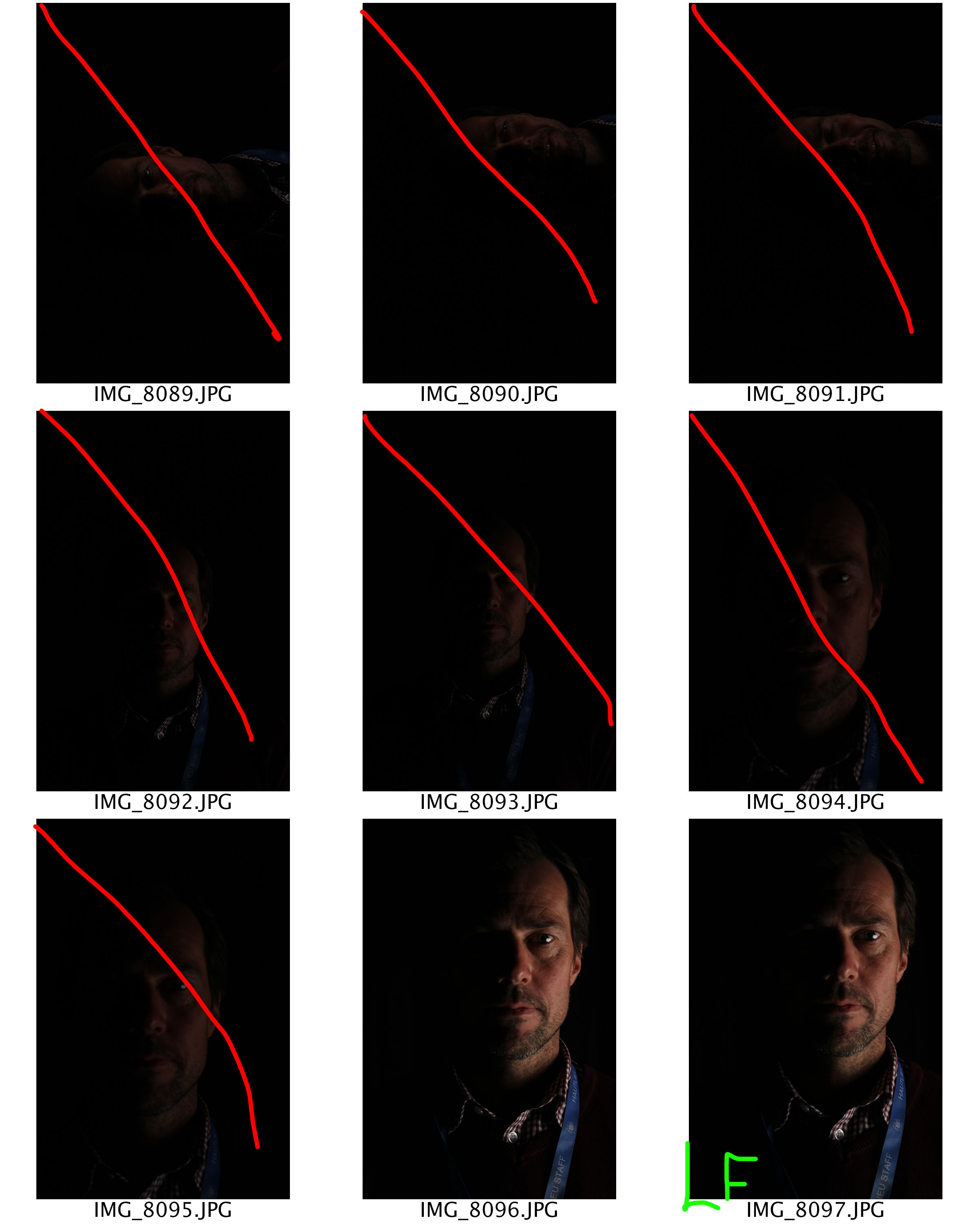
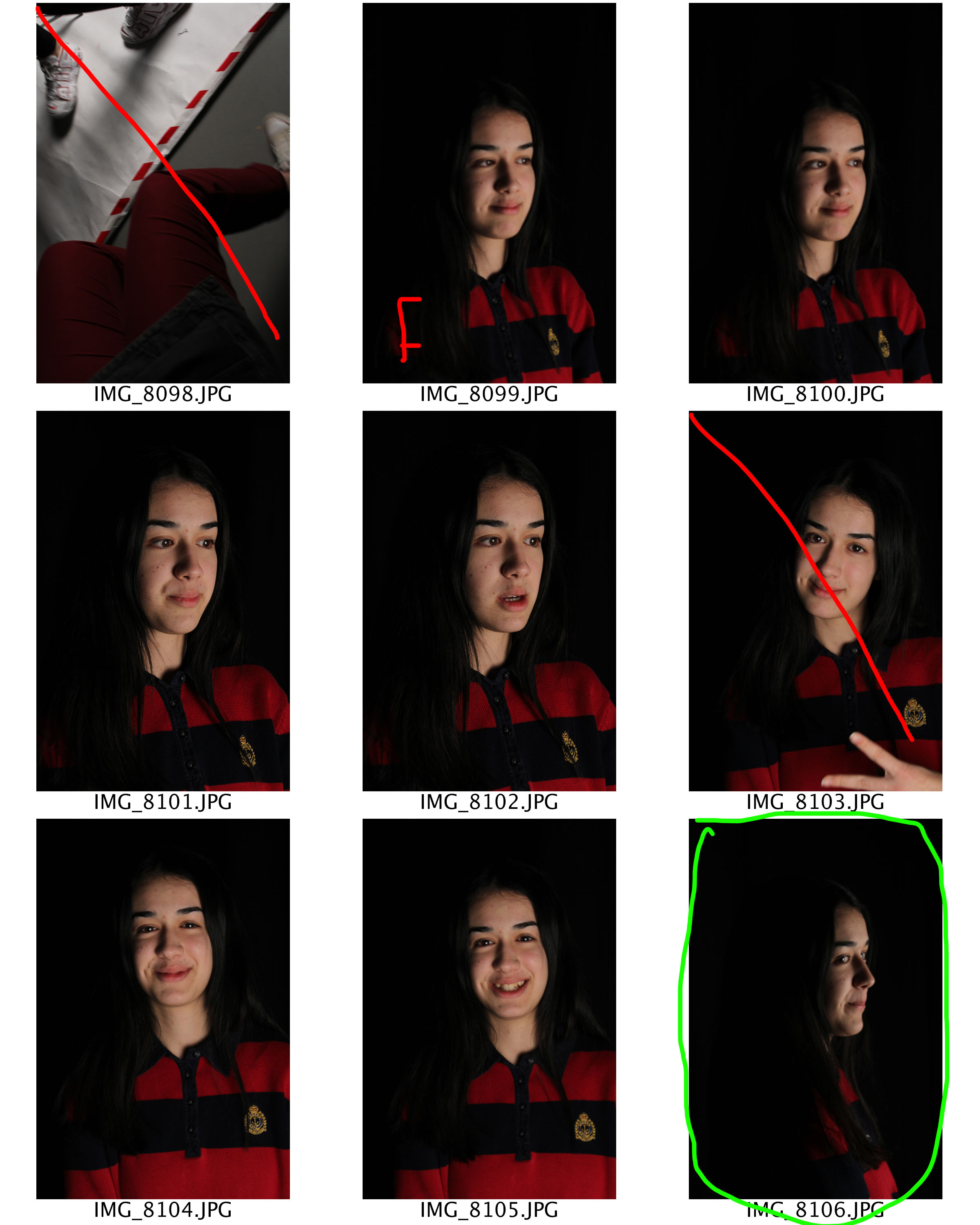
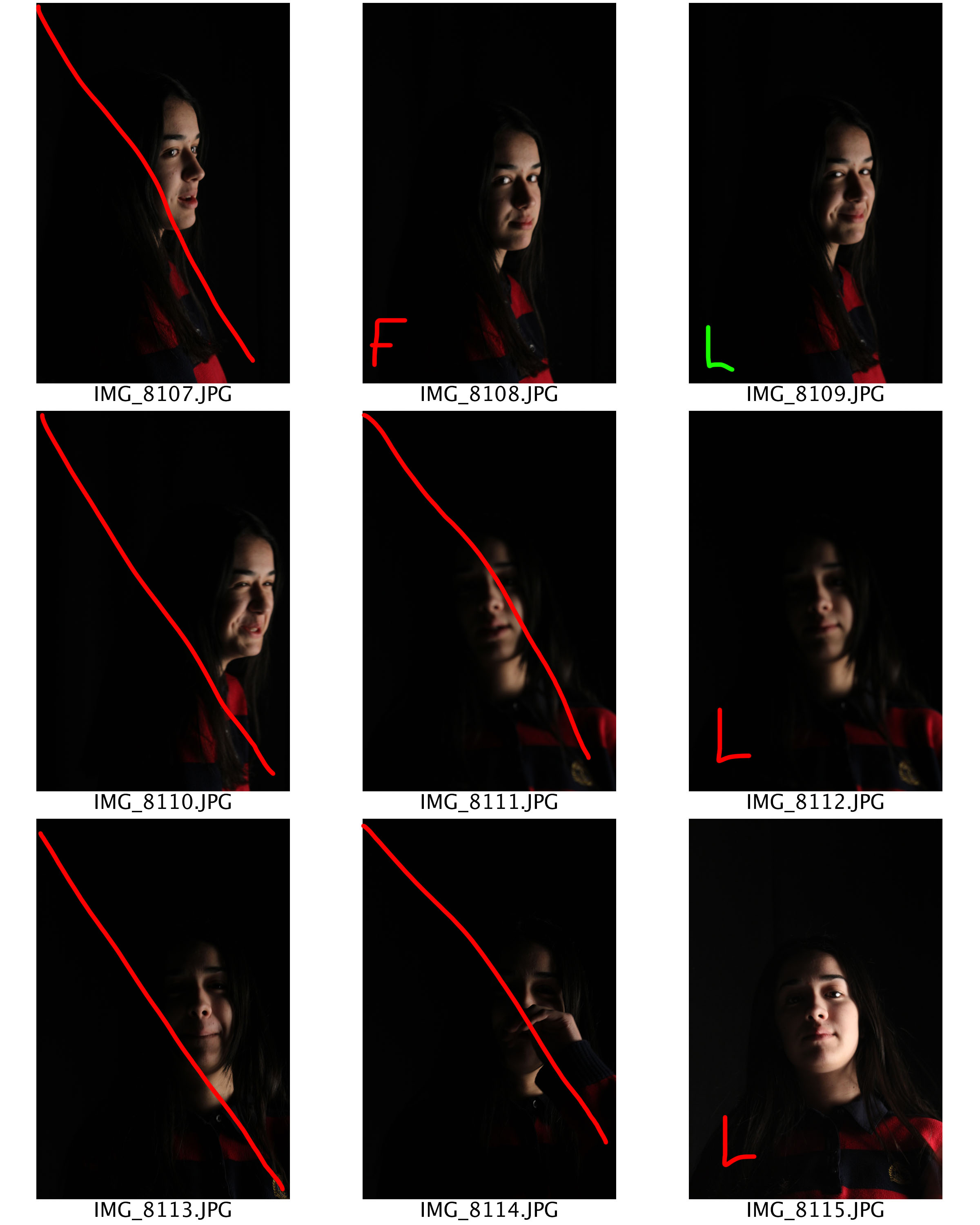
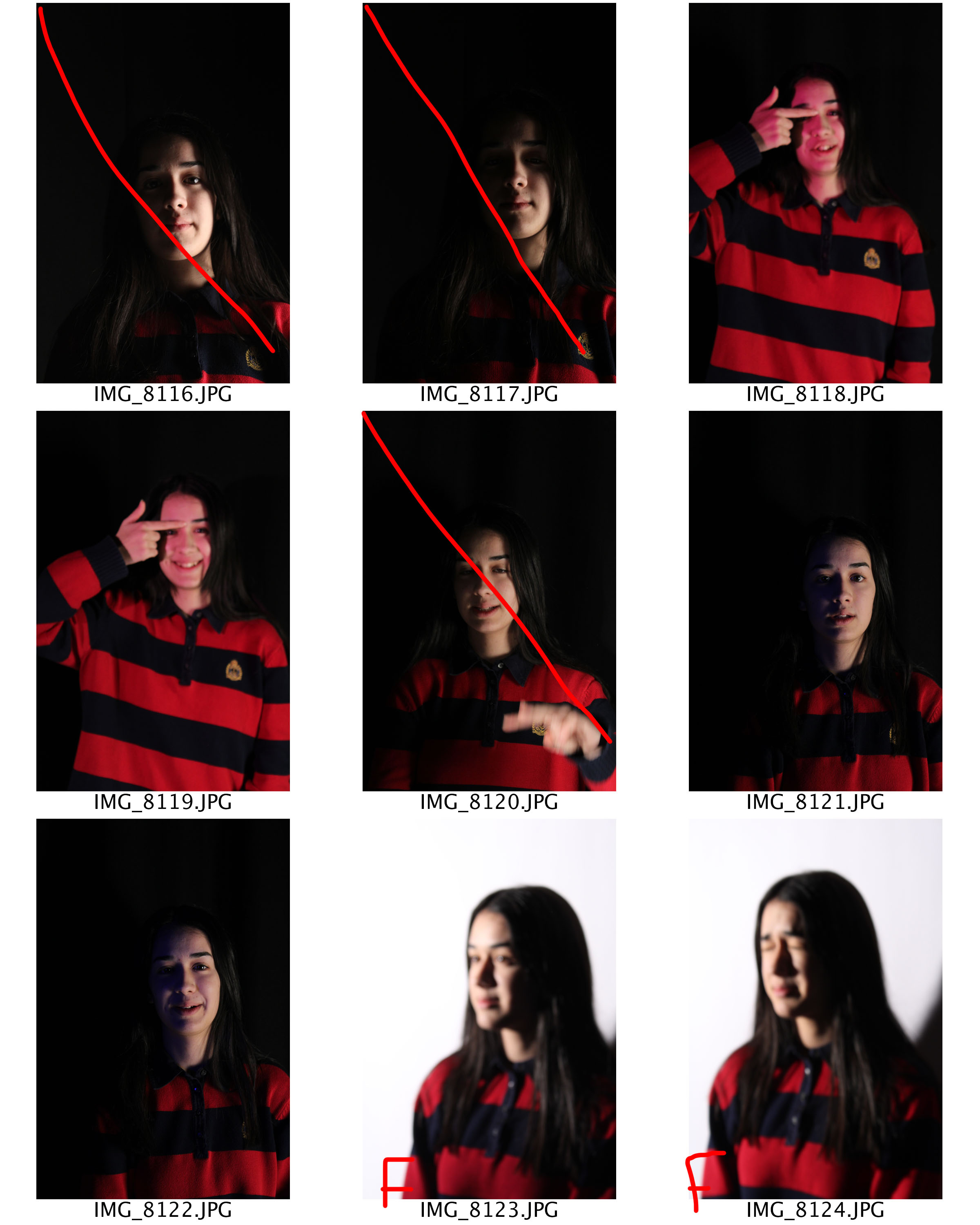
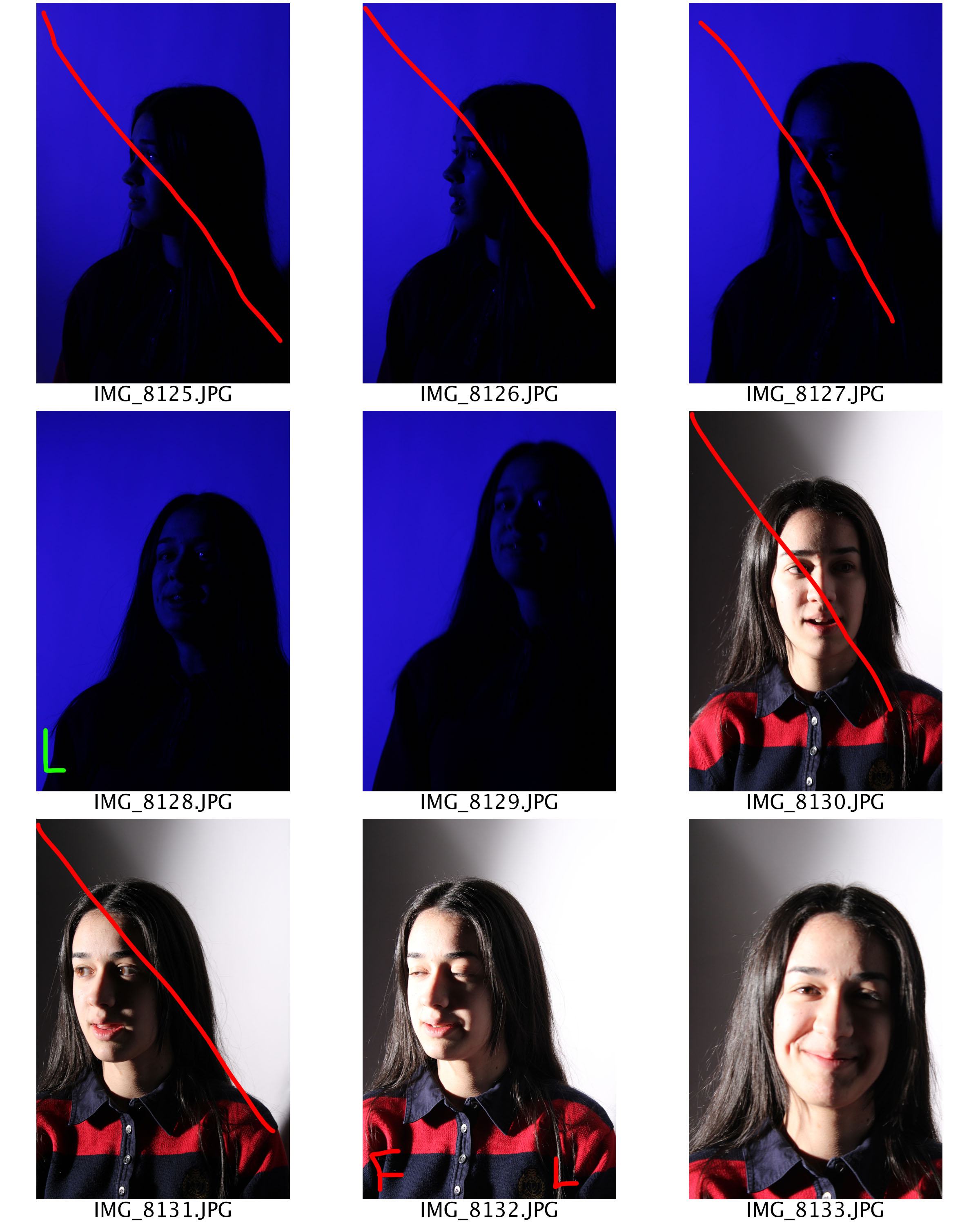

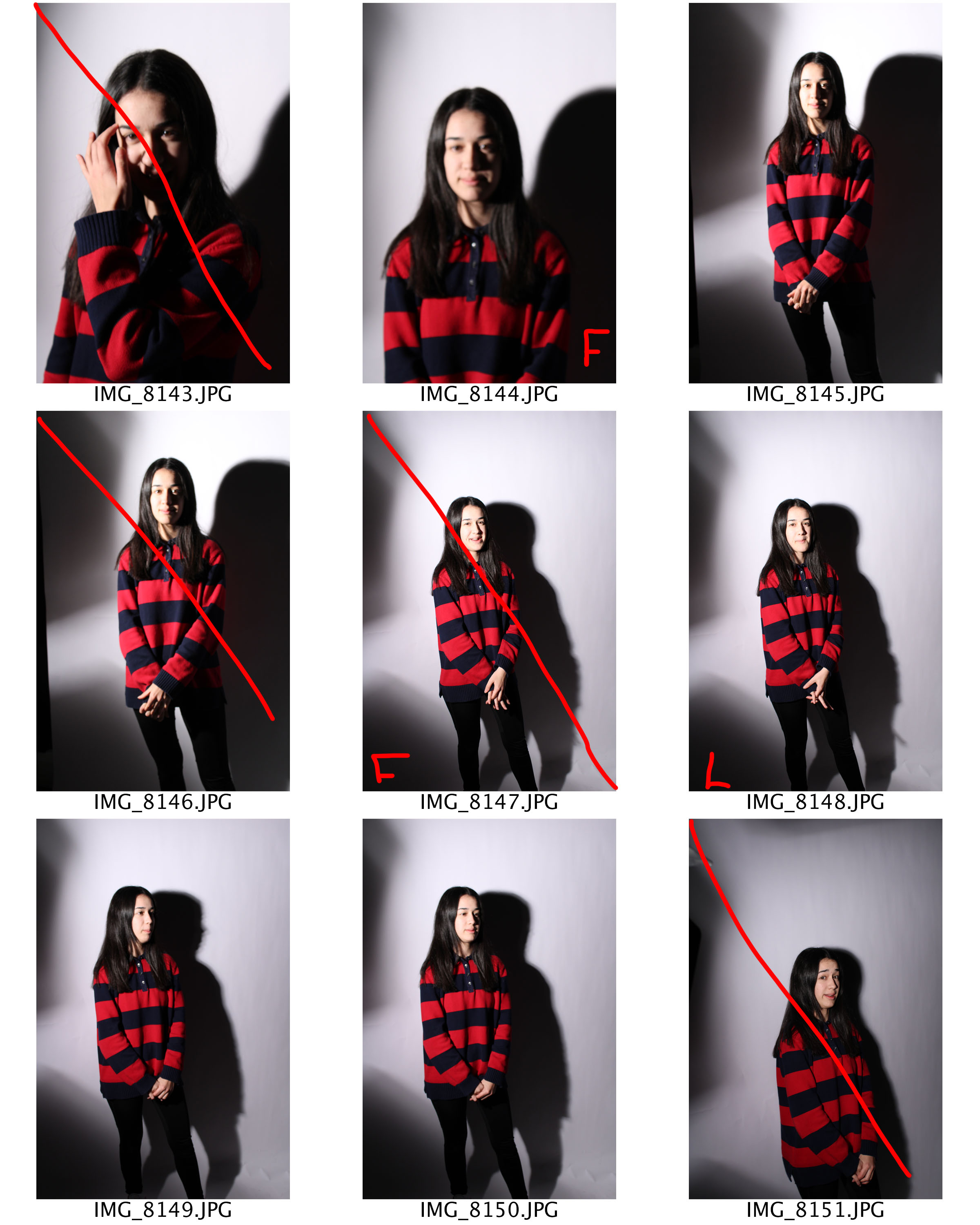
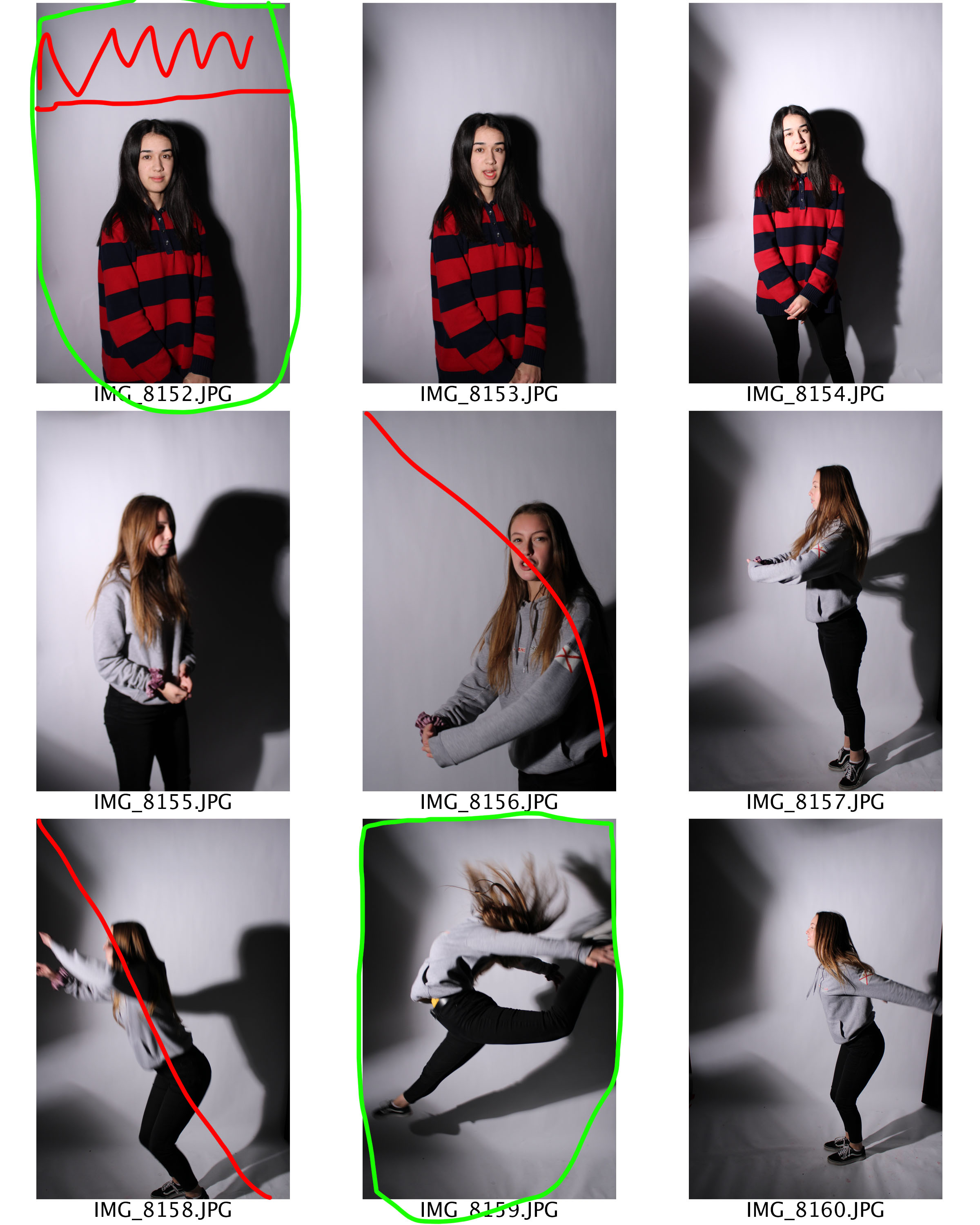

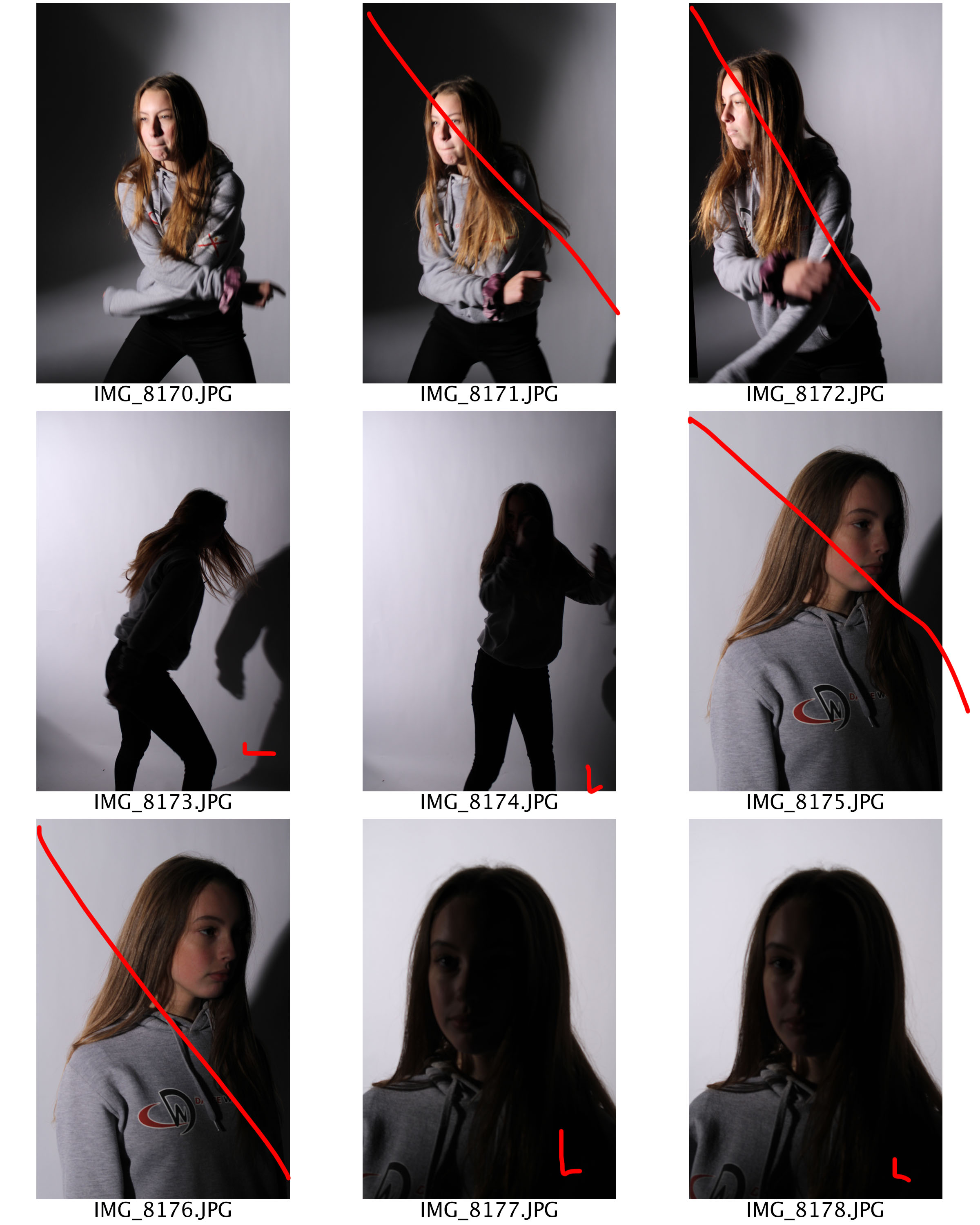
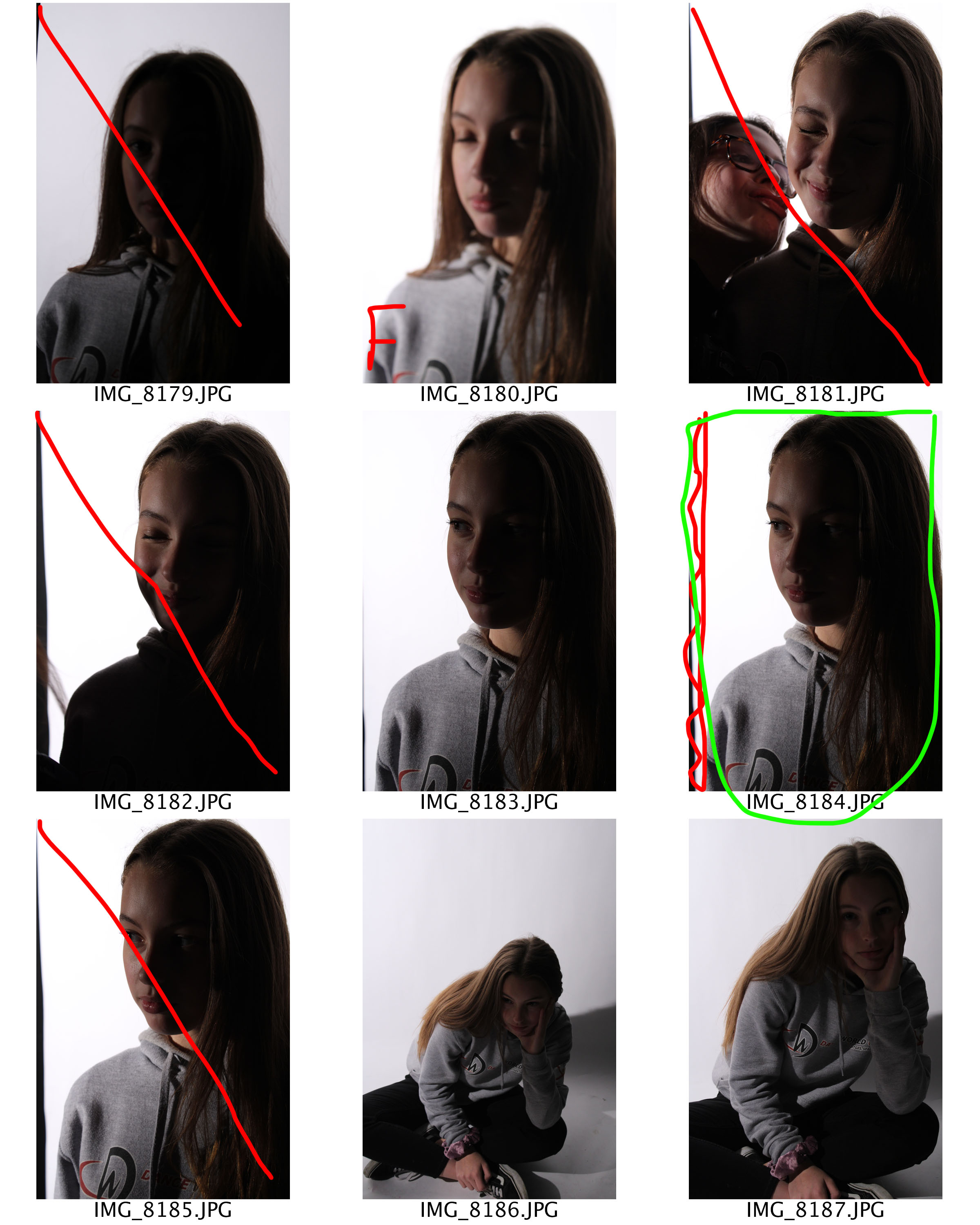
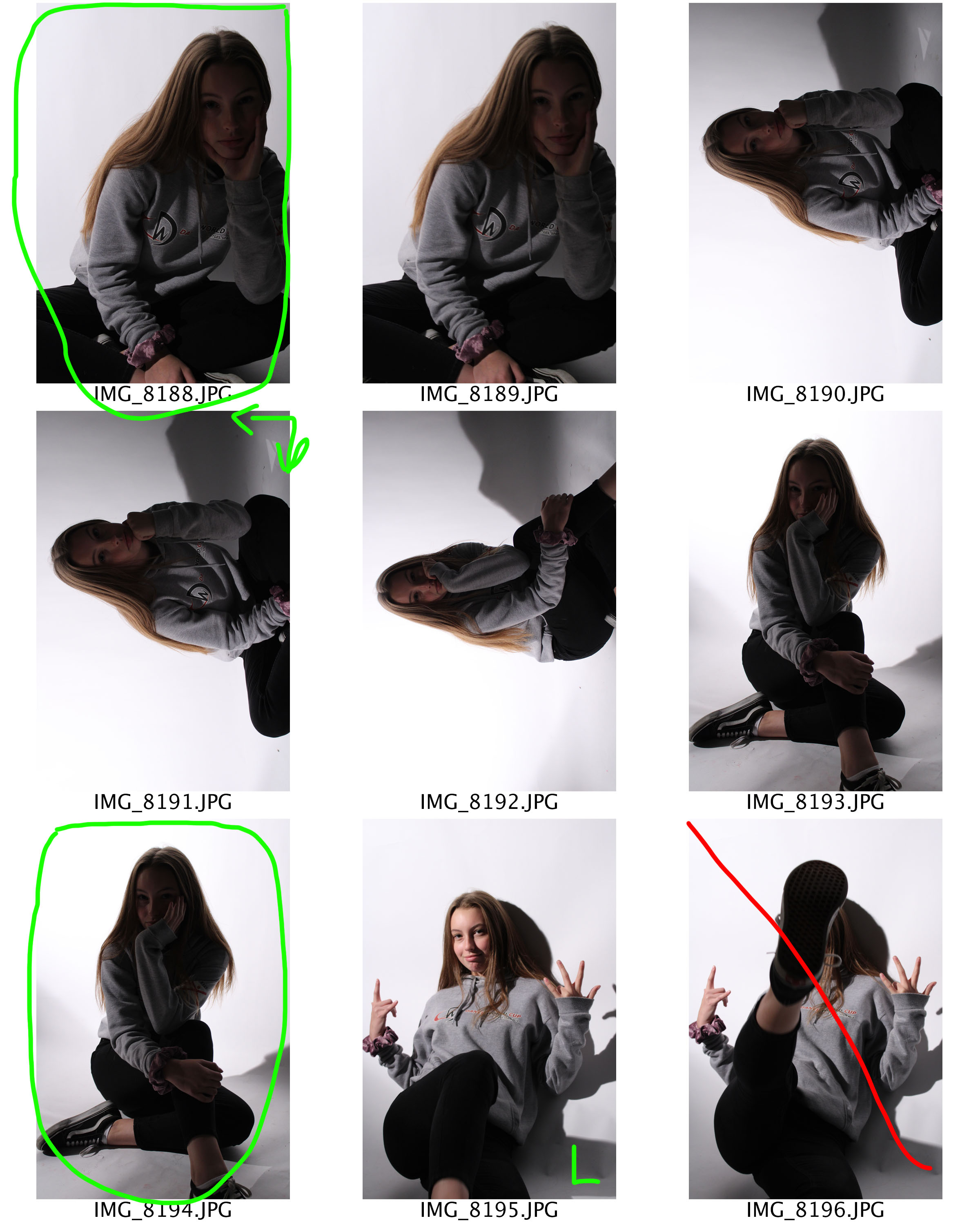
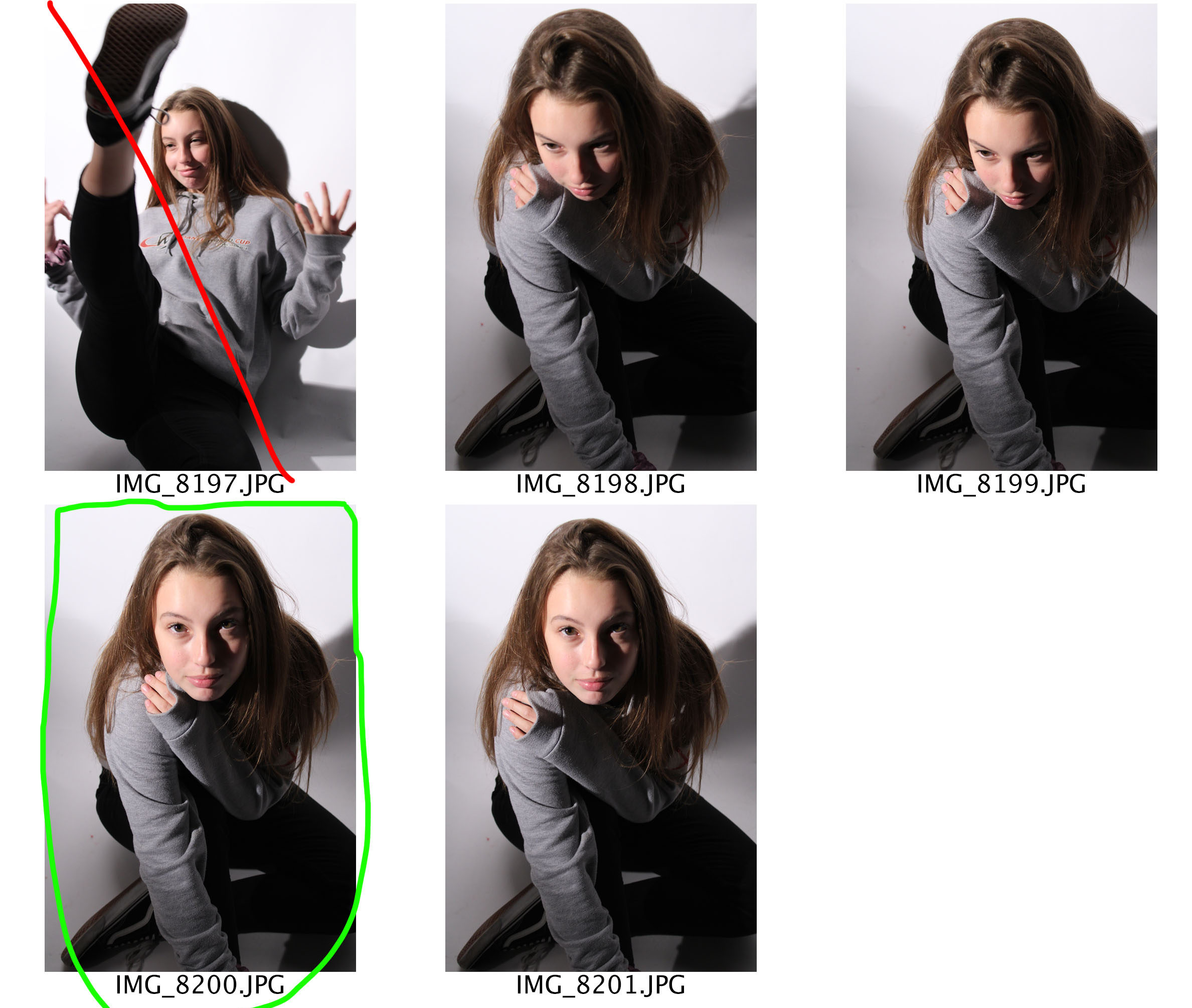
Edits




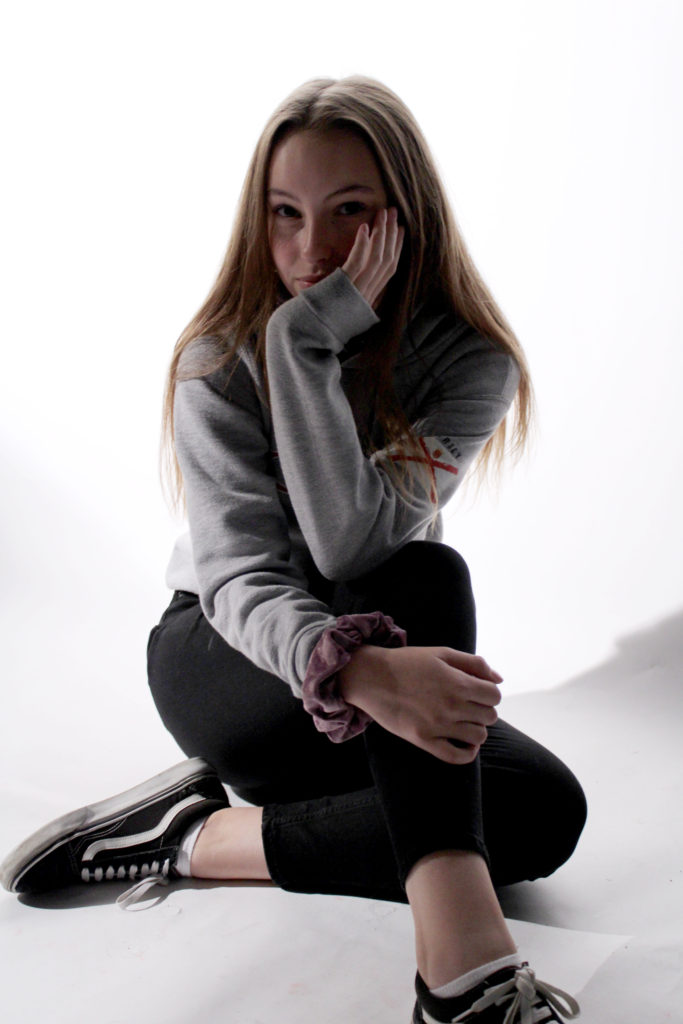
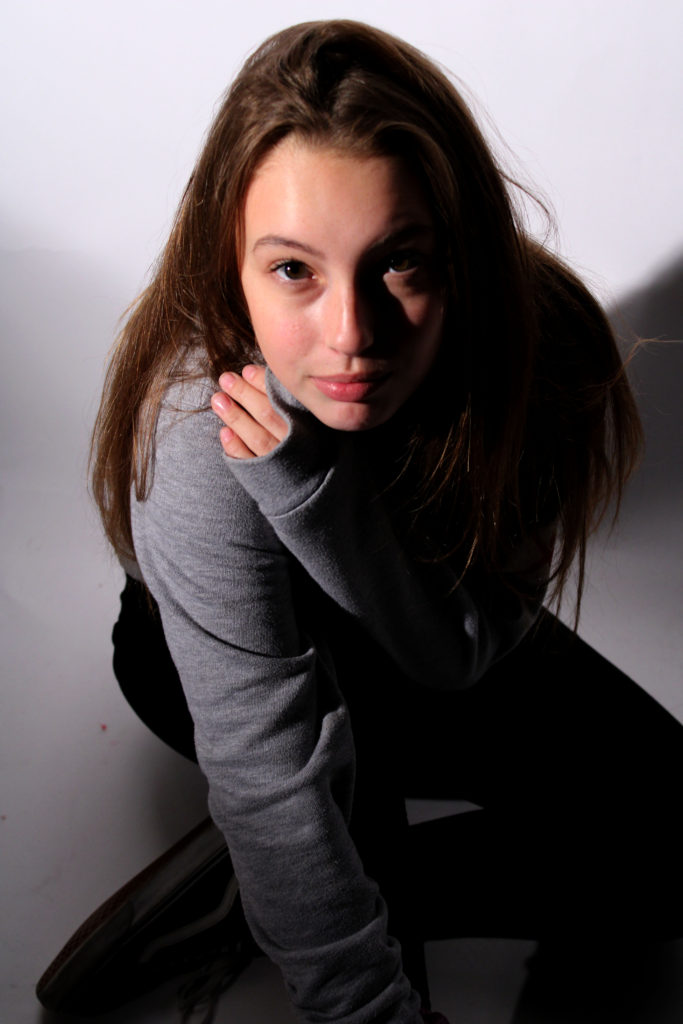
This outcomes are very successful considering it is my first attempt at studio photography. Due to the success of this first photoshoot, in studio photography, I decided to conduct another photoshoot where I would look at different aspects of studio photography. I will be using filters and props within this new photoshoot in order to gain more meaningful outcomes. I will be redoing my Chiaroscuro technique images as the original images where not as sharp as I would have liked them to be.
Contact Sheets
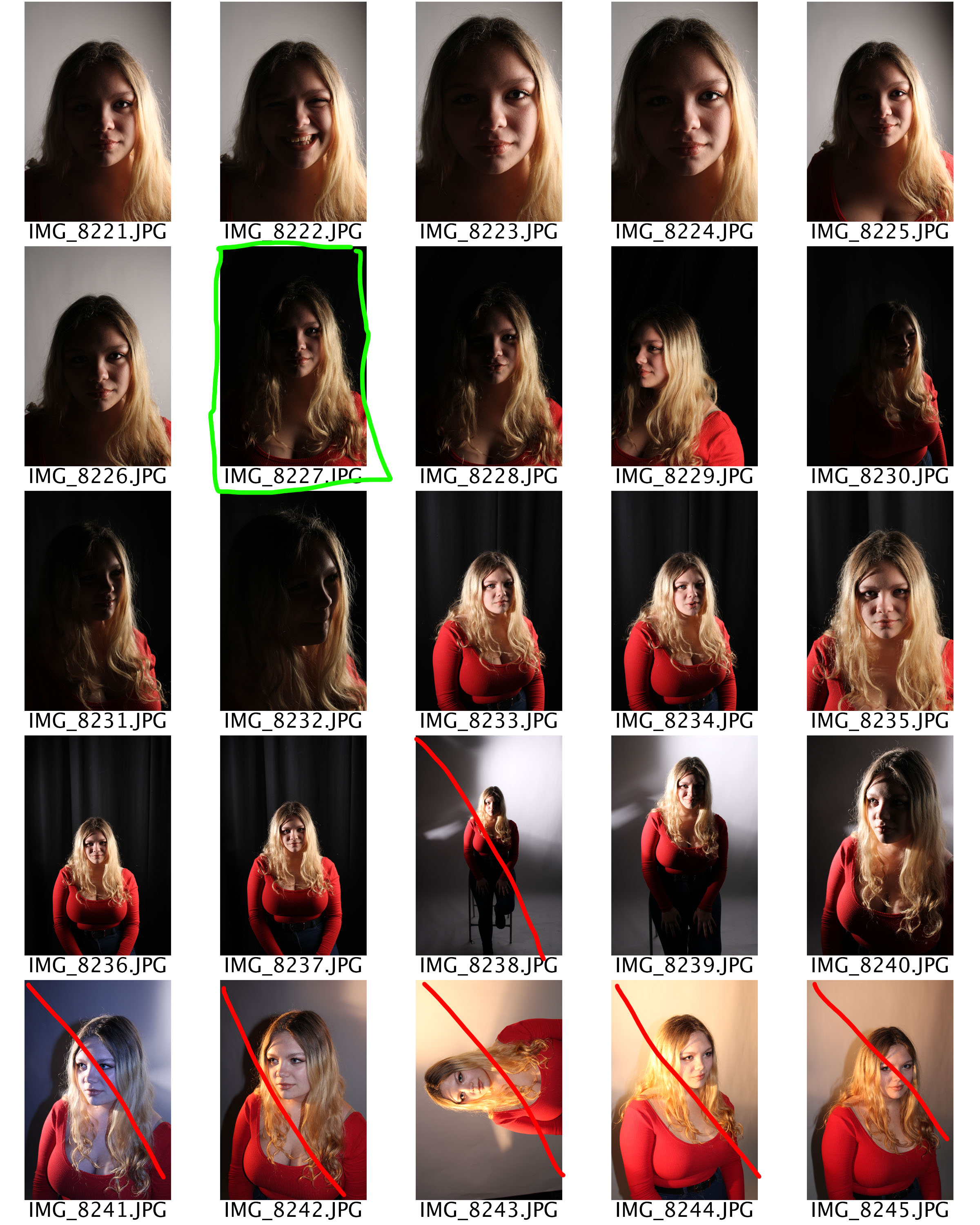

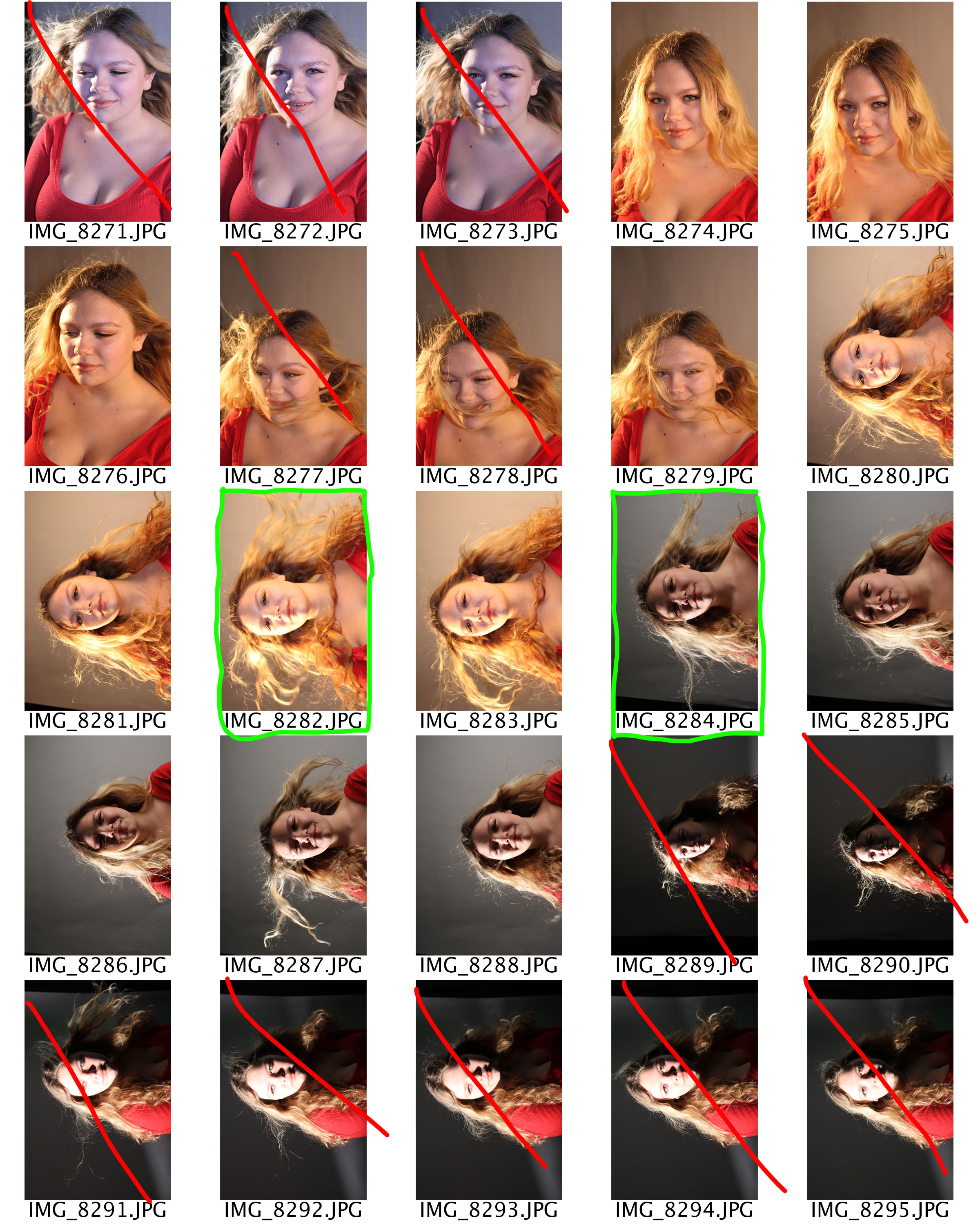
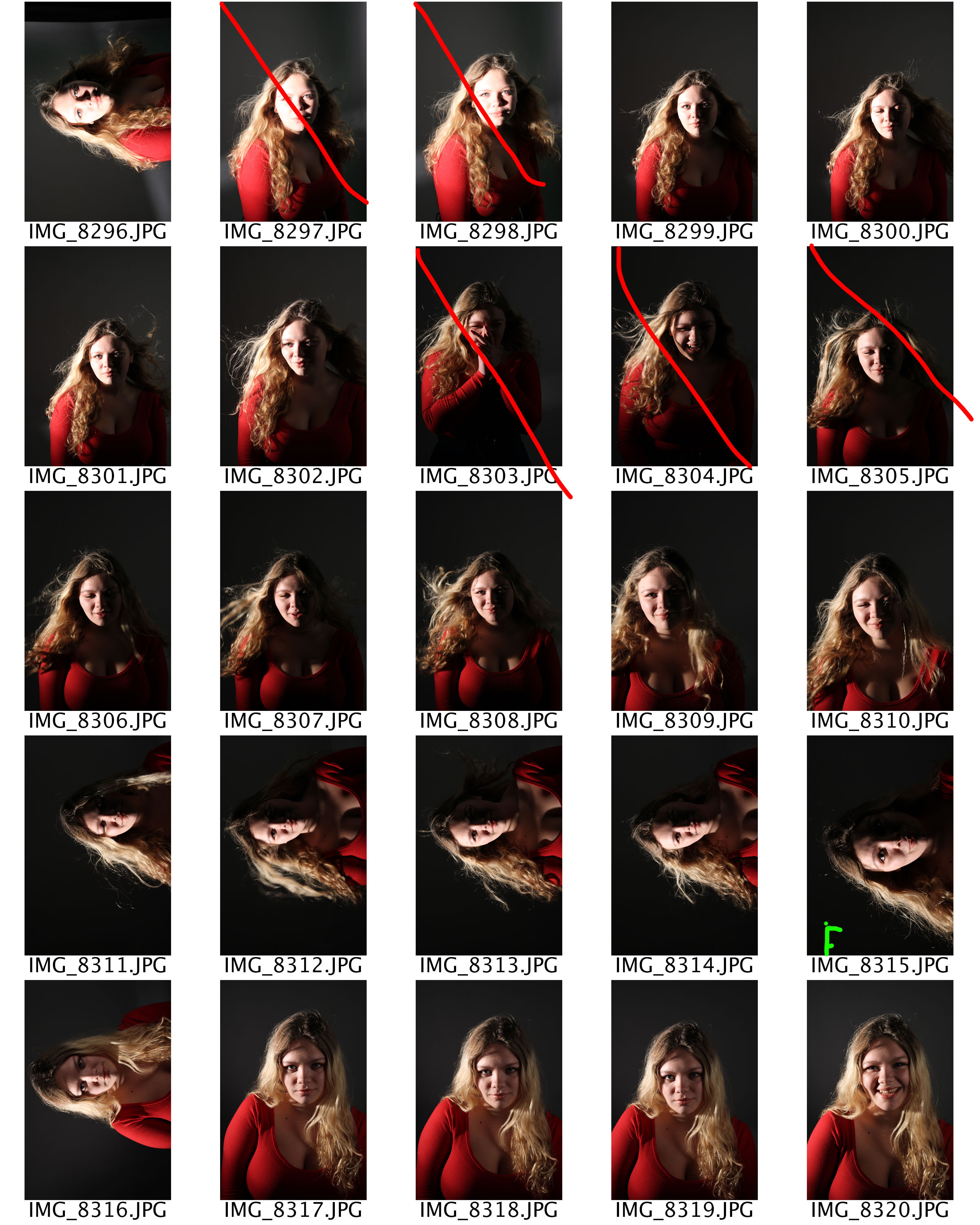
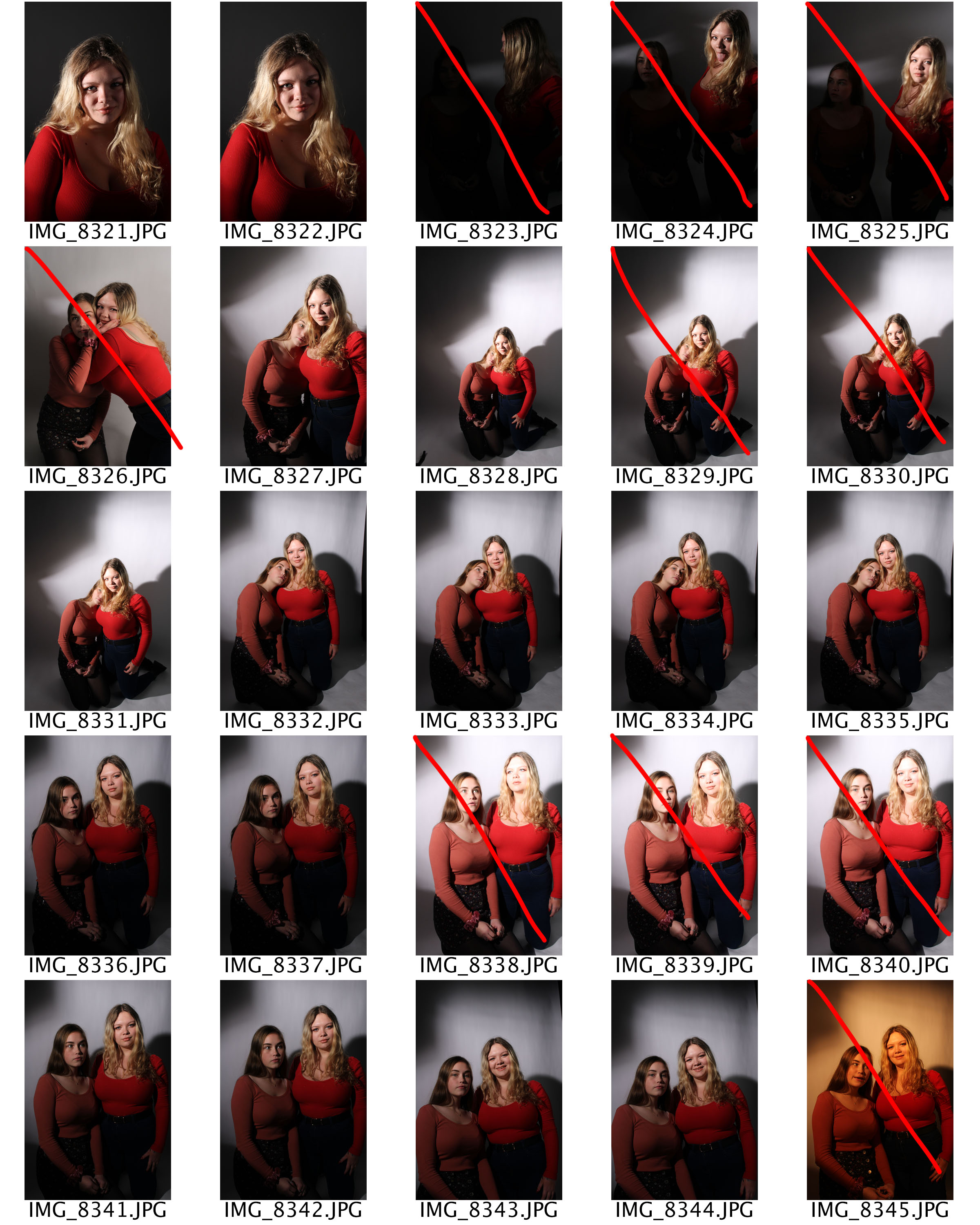
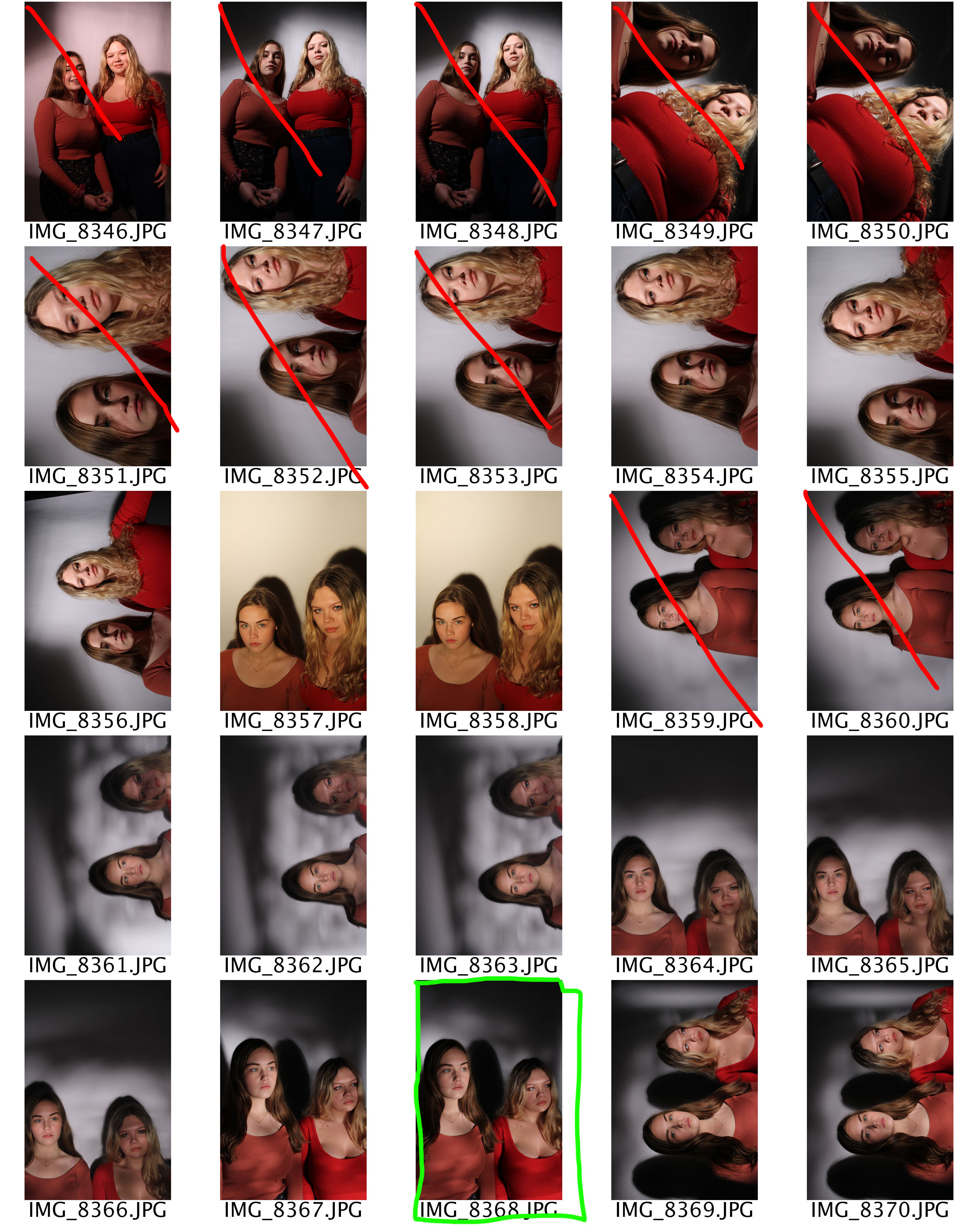
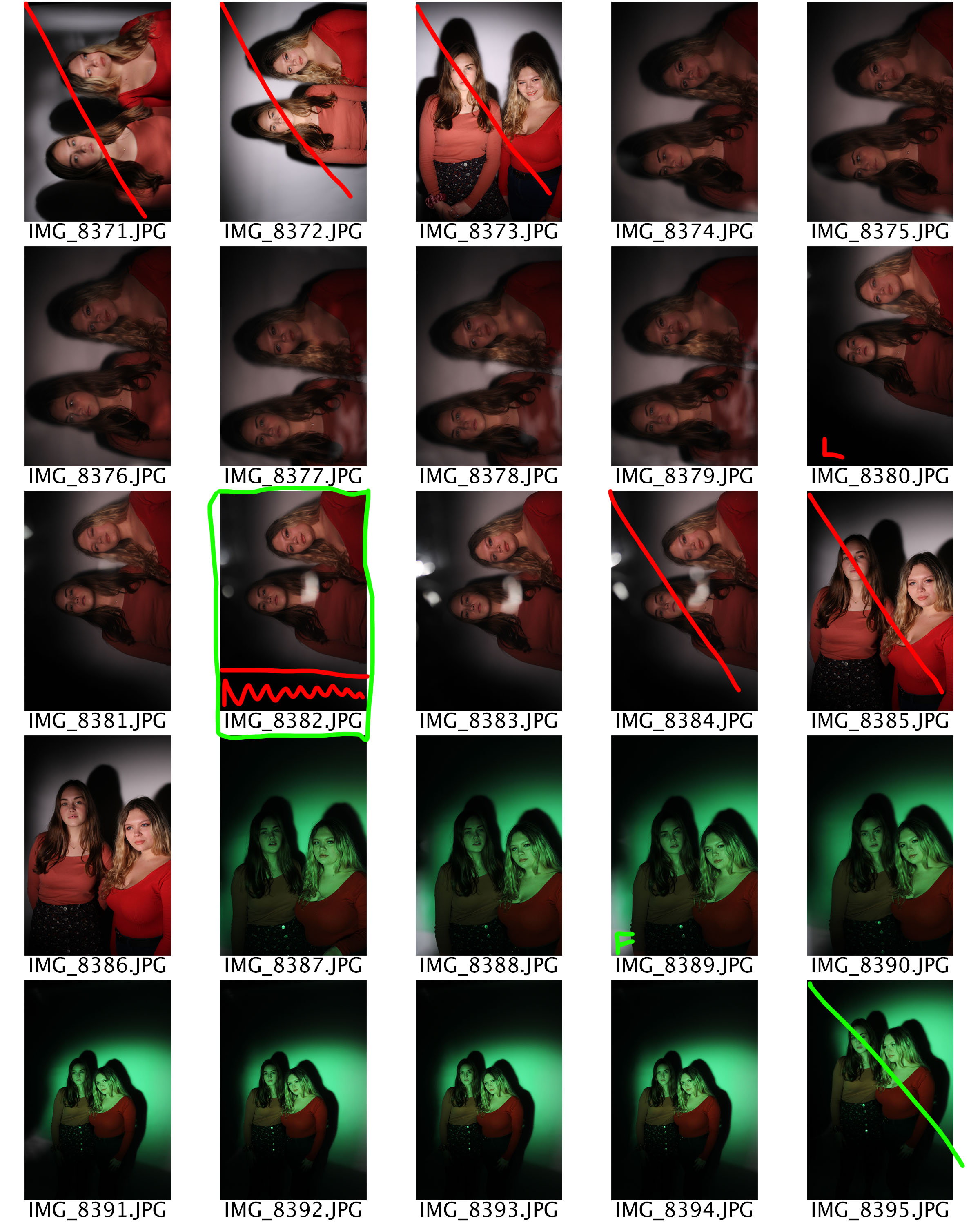
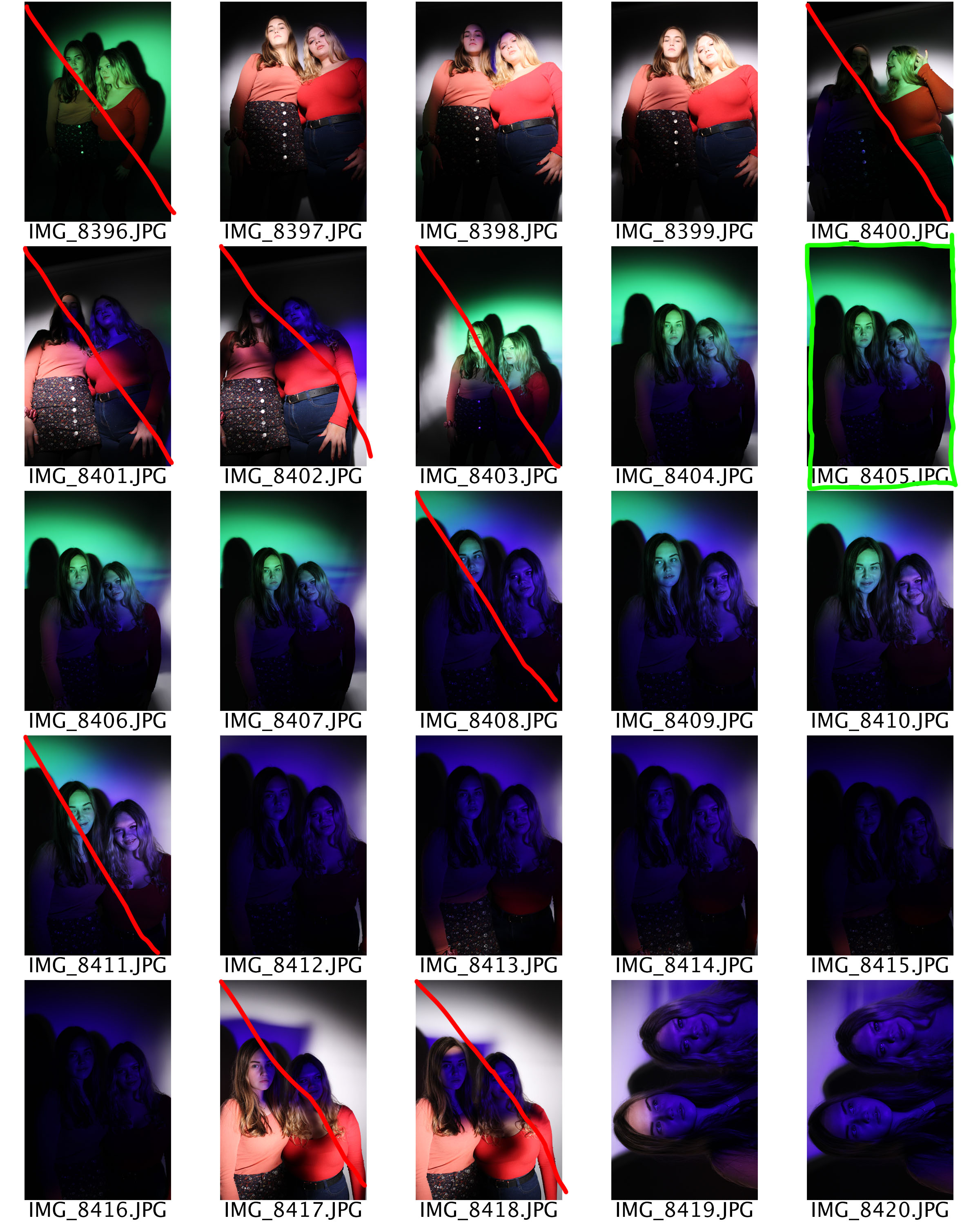
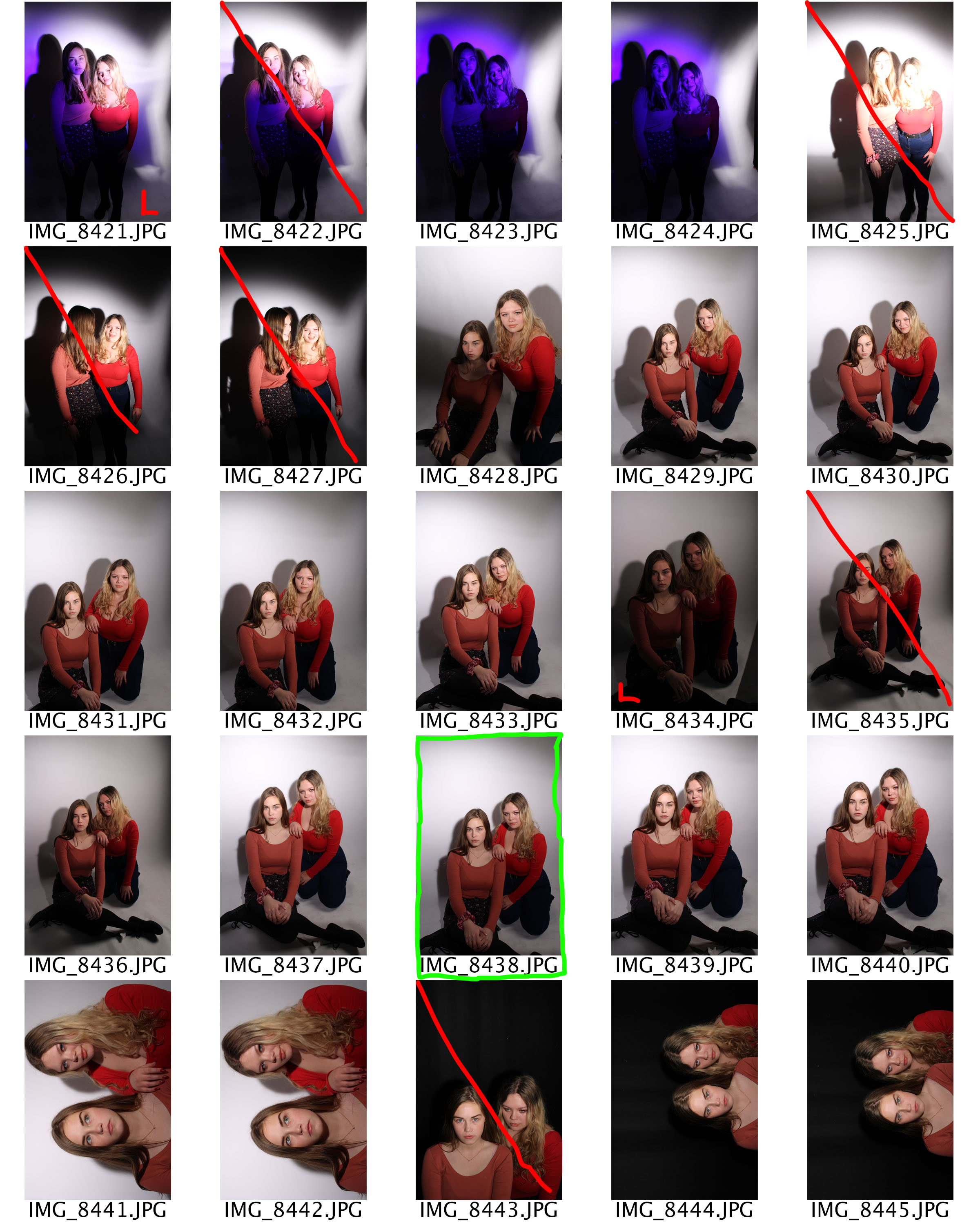

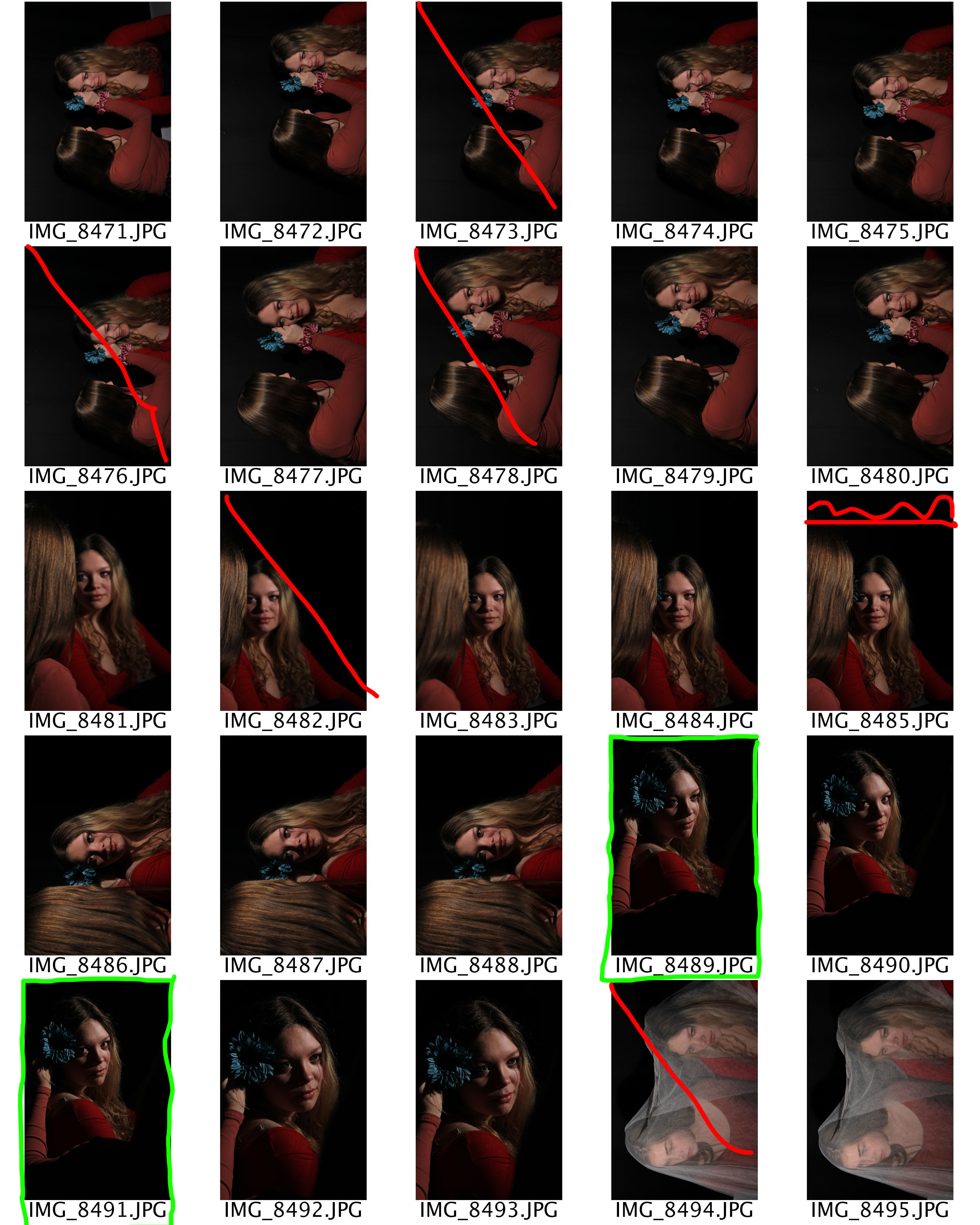
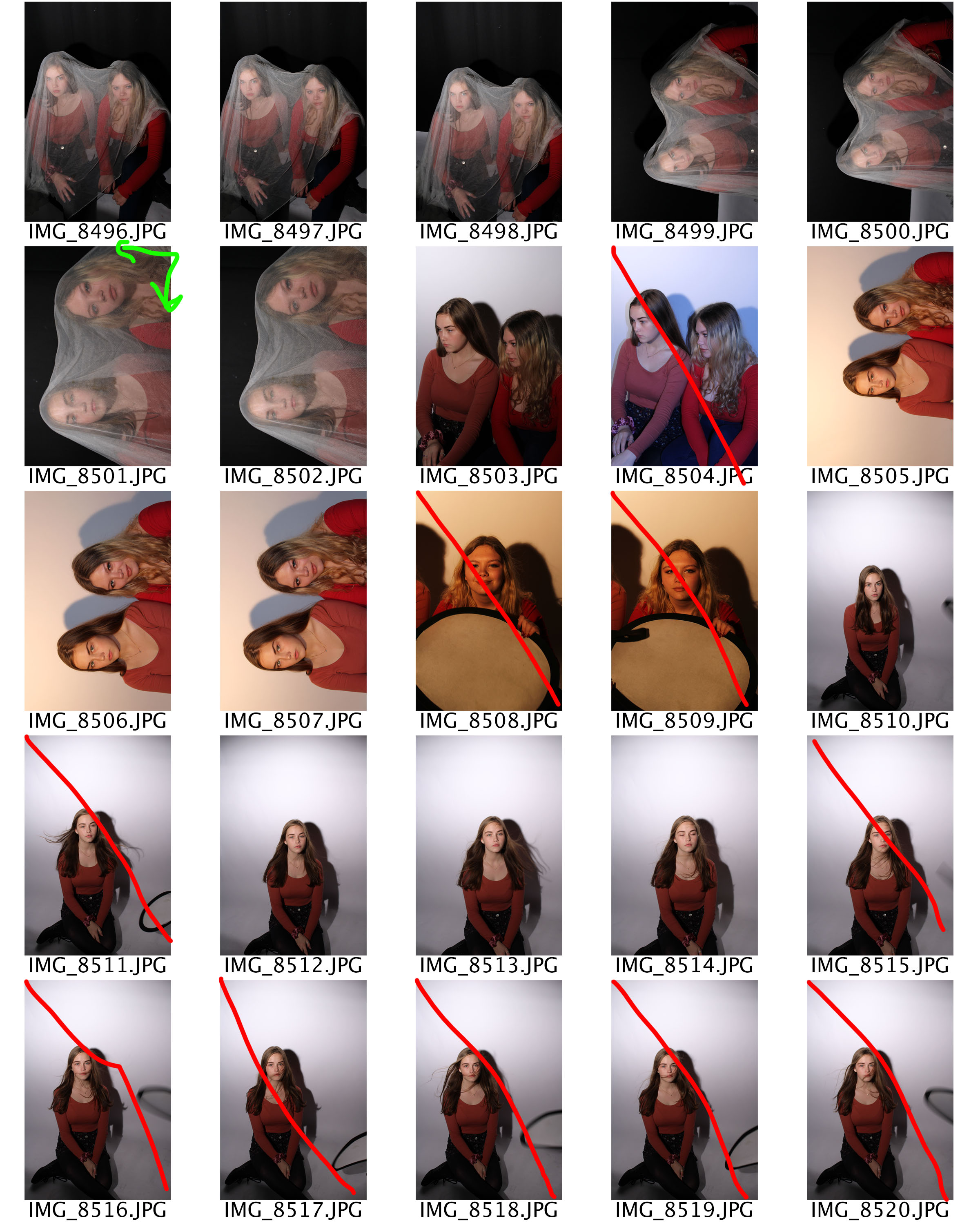

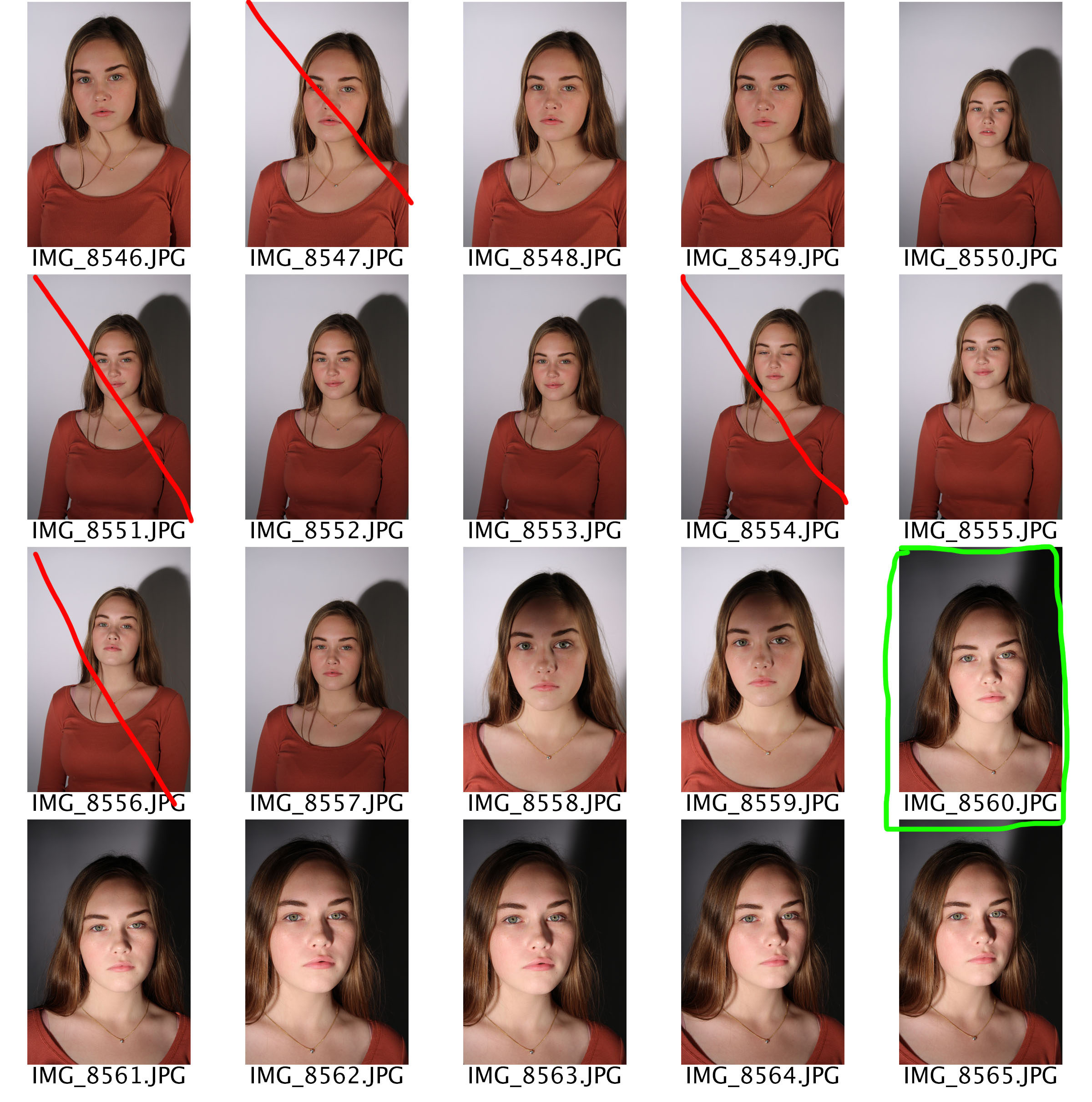
Edits
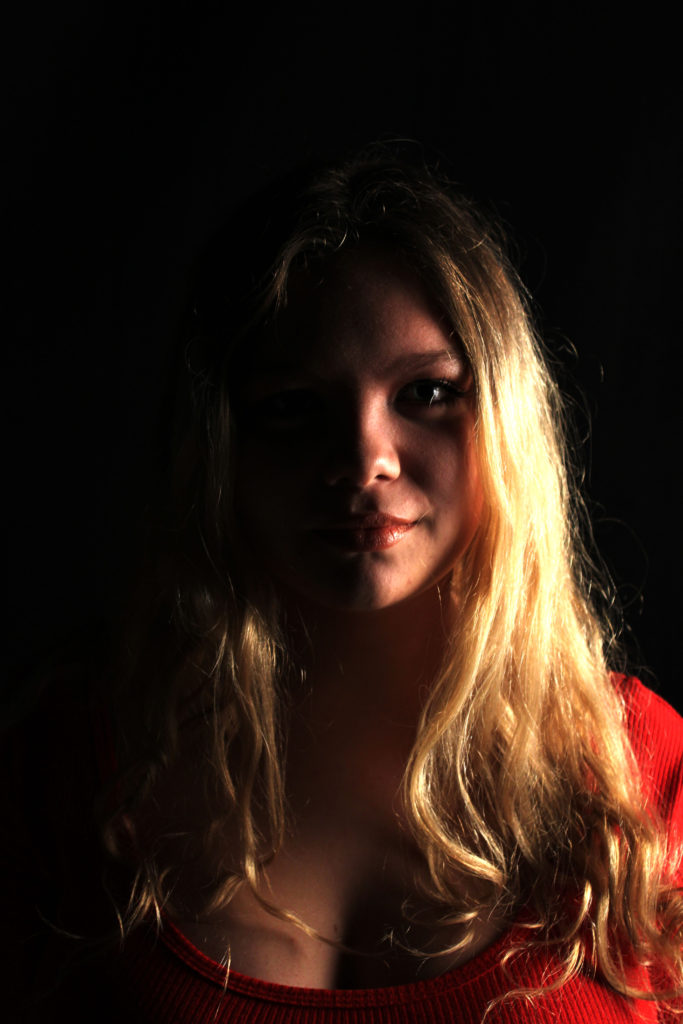
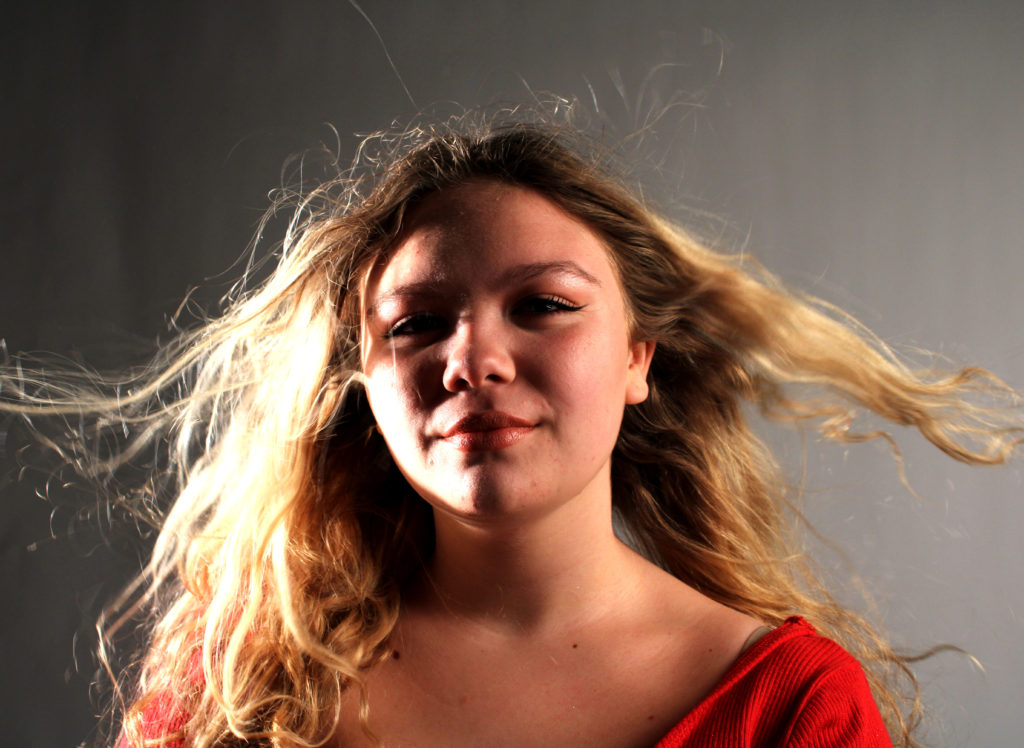
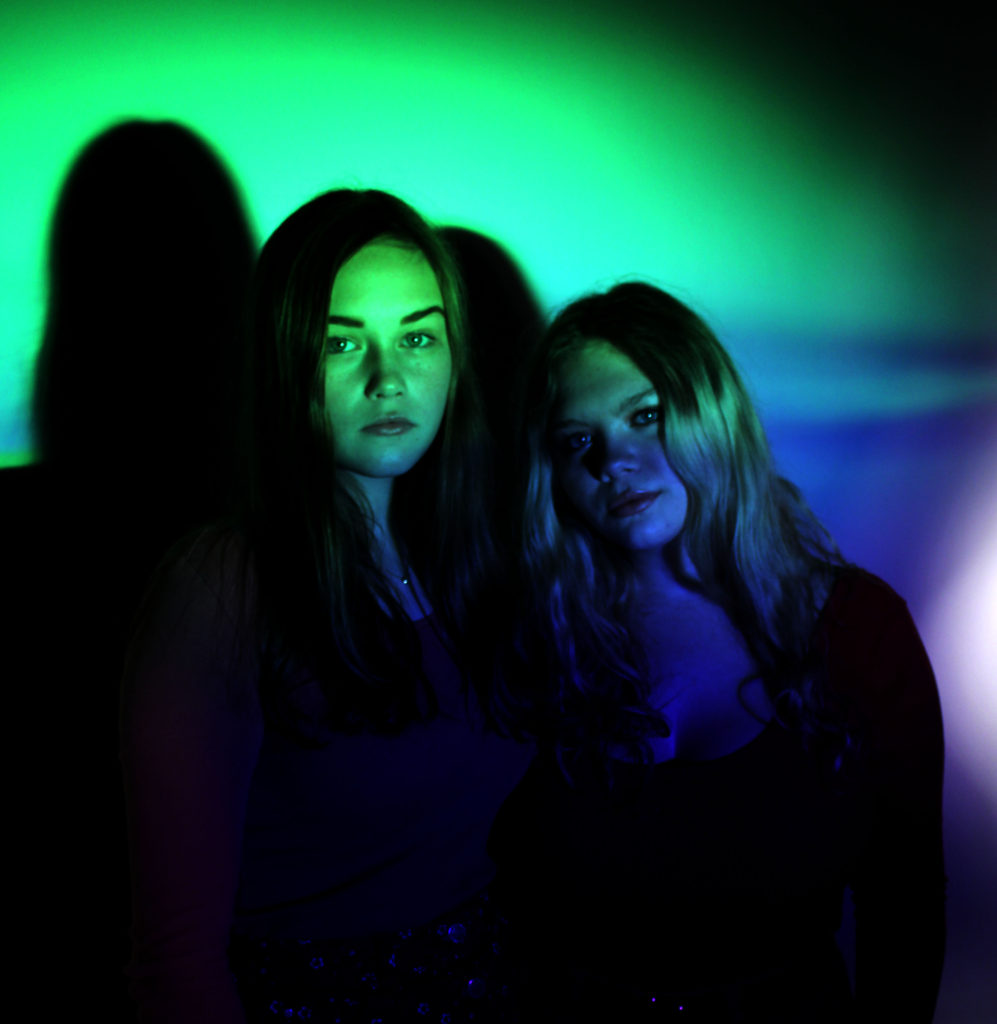
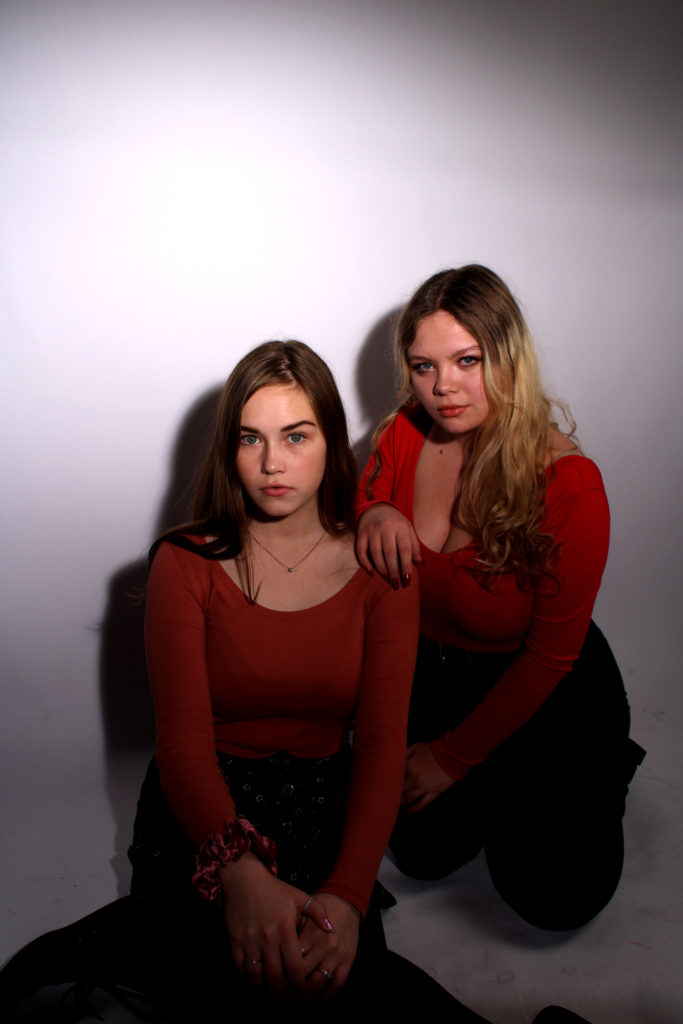
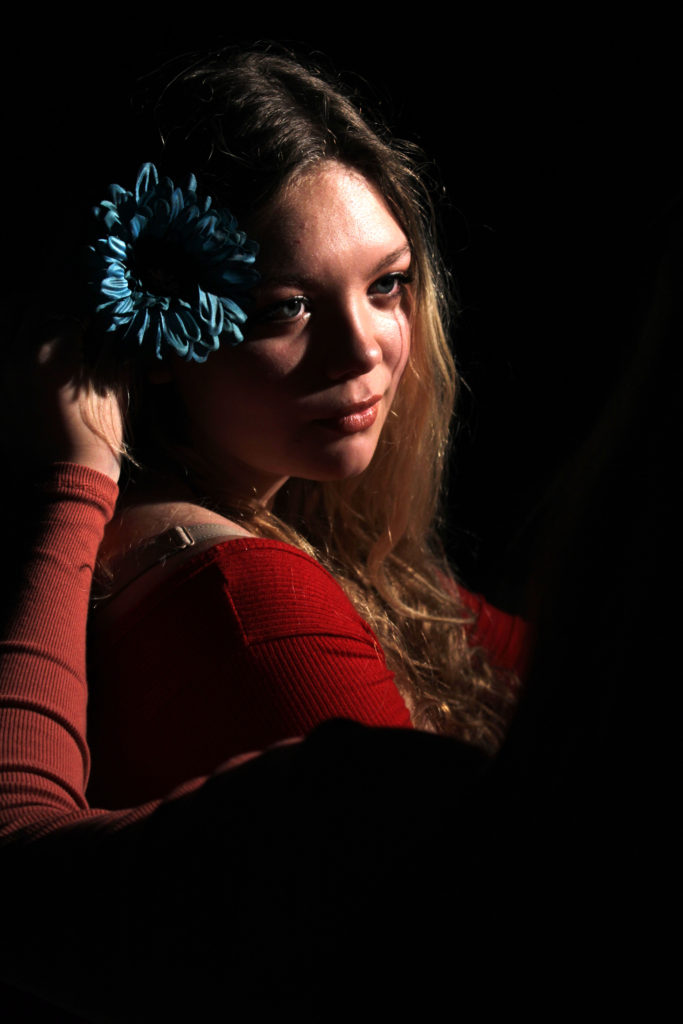

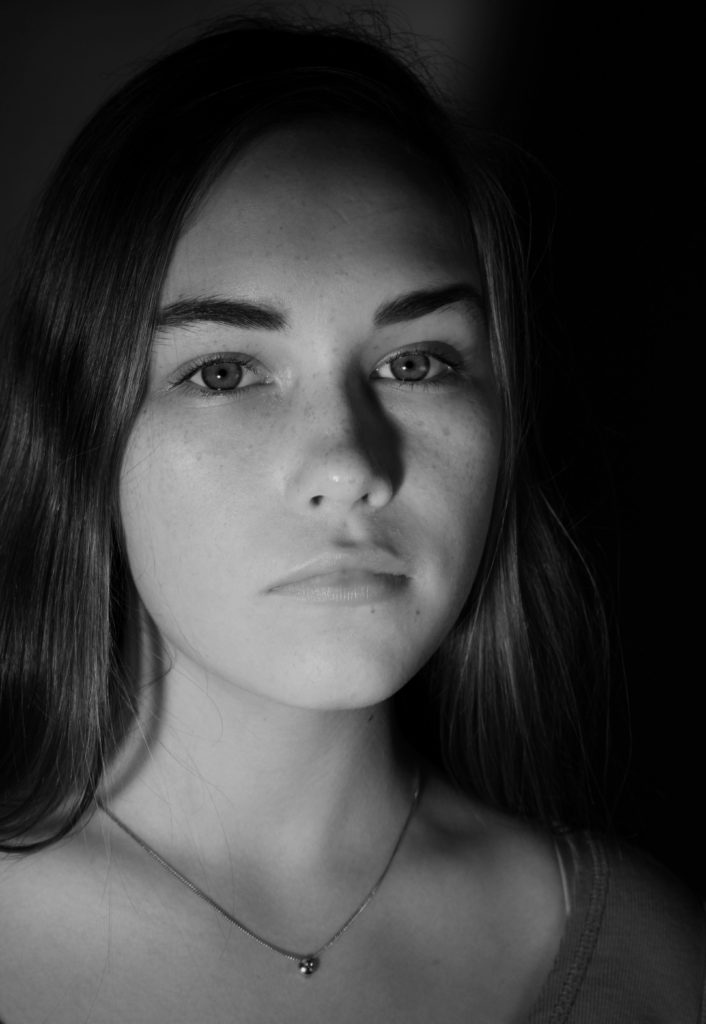
I am very pleased with the way these outcomes have turned out from this new photoshoot. I have been able to successfully show the chiaroscuro technique. I have also been able to use props and light filters in order to create an emotion for the models
